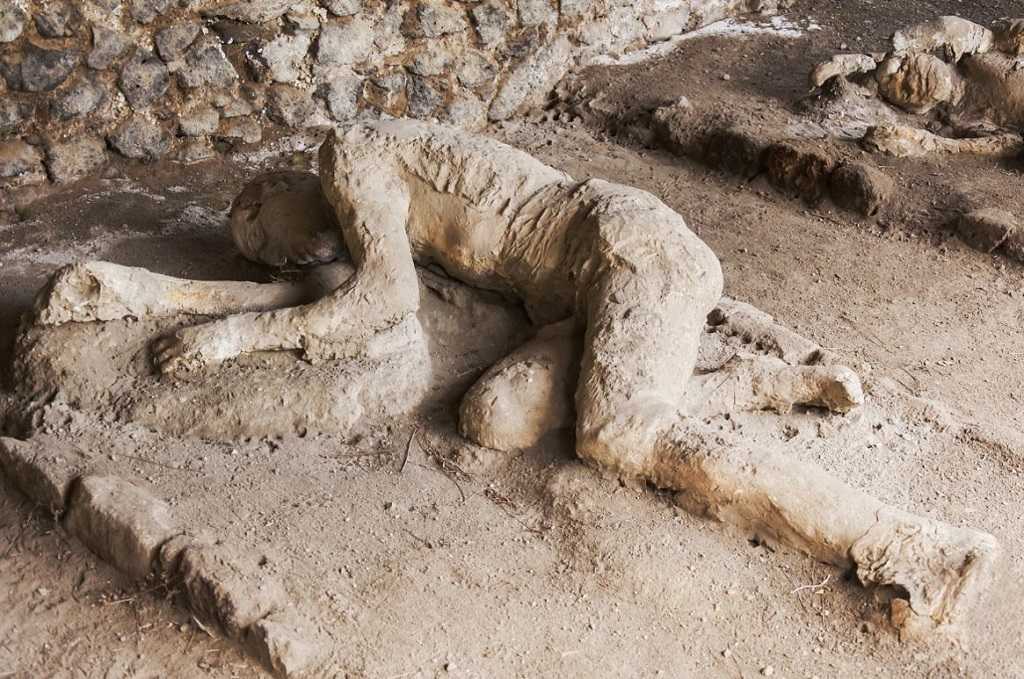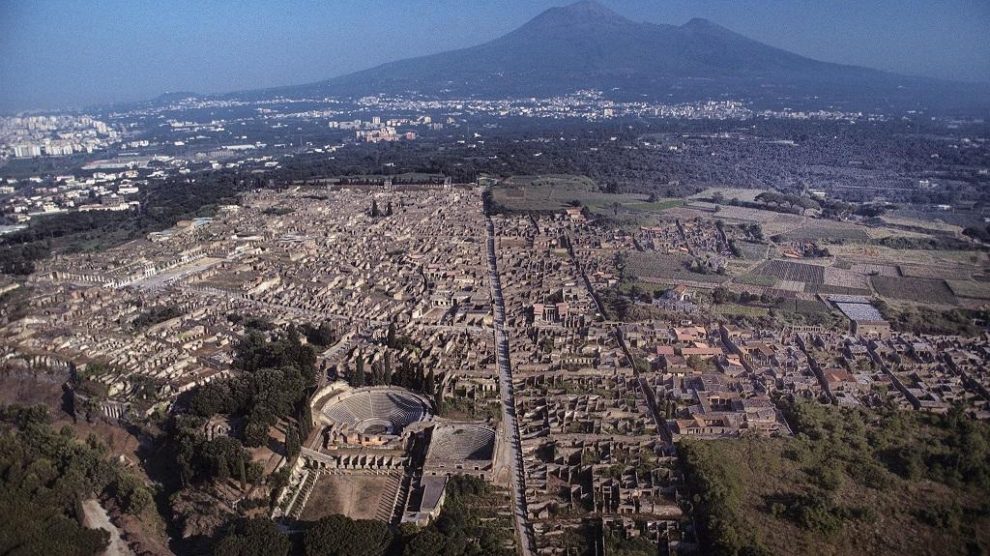Last Updated on 18 January 2018 by TT
What To See In Pompeii; Sights and Places
What to see in Pompeii; on the skirts of Vesuvius Mountain near the city of Naples, the story of the ancient city of Pompeii, which was founded in the 6th century BC as an ancient Greek city, ends due to a volcanic eruption in AD 79. According to some researchers, the population of the city was 11,000. When the city was covered with a layer of ash and dust reaching 20 meters, all but 2,000 people was already left the city. This was due to the devastating earthquake that was occurred 16 years before the explosion. Interestingly the ruins of Pompeii had been forgotten for 1500 years under the pumice and this protected the whole city very well untill today. The excavations has been started in the 18th century and most parts of the Pompeii (3/5) have already been excavated.
The city was founded on a flattened small hill and surrounded by walls about 3 km long, which is still visible today. The artifacts found until 1911 were moved to the Naples Archaeological Museum. Those found after this year are protected where they are. By this reason, the new excavated places would be more interesting when you are in the site. When visiting the streets of the city, details such as water distribution network “the lead pipes”, fountains in the square, shops in front of the houses, sliding door places of shops, corroded horse carriage tracks, pavements, street and wall signs are so well protected very amazing for many visitors.
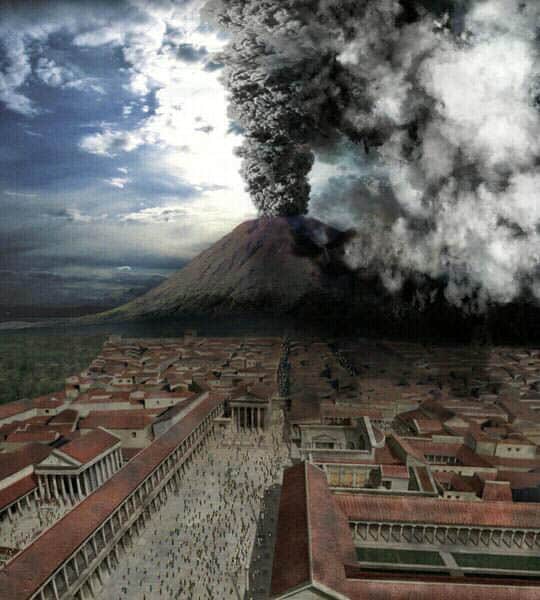
Important Note; Pompei is an extensive antique city. Do not forget to take a free map, wearing comfortable walking shoes and taking your drinking water with you. And in the summer time take your sunscreen and hat since the weather is generally broiling hot.
How To Go To Naples & Pompeii From Rome?
The distance from Rome to Naples is 230 km’s and from Naples to Pompeii is 25 km’s va highway. If you like to go to Naples from Rome by train you need to take the train from Roma Termini Railway Station. And to go to Naples to Pompei, transfer in Naples for Pompeii Scavi train. The journey will take around 2.5-3 hours for one way. The return ticket price varies from € 30 to € 80 depending on the season and availability. Its also recommended to join “daily Naples-Pompei tours from Rome” for a hassle-free travel, and sometimes this is a cheaper optin comparingthan train.
Must See Sights & Places in Pompeii
- Gymnasium; this part of the antique site consisting of a sports and fighting field and the rooms of the gladiators surrounded at one side of the field. As you will see the door of the rooms are so low. This tells that the average human height 1.500 years was around 1.60 cm’s. The wooden doors of the rooms are not original.
- Amphitheaters; one of the two amphitheaters which are close to each other was used for the theatrical performances, while the other for the musicals. The larger one which is dated 80 BC has a capacity of 12,000 persons and was used for theatre performances.
- Via Stabiana: this is the main street of Pompeii and was sloping down to the port of the city. You can see the wheel tracks of horse carriages, pavements, the remains of shops and restaurants on the road-side. One of the most interesting parts on this road are the stones which used to cross the road to not to step on the sewage waters.
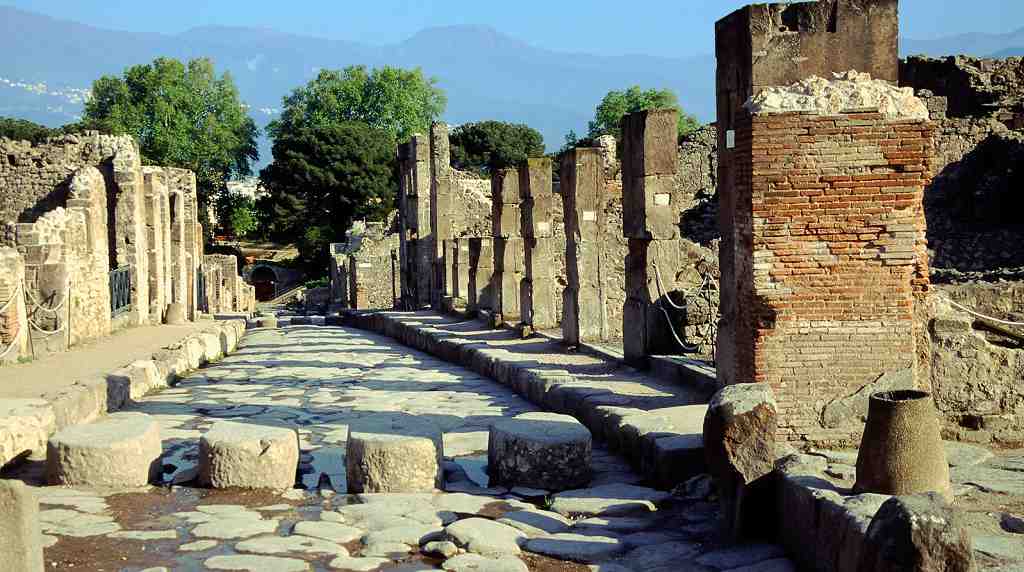
- Terme Stabiane (Stabian Baths); At the intersection of Via Stabbiane and the Abbondanza Streets, this large bath complex consists of a men section on the right side, a gymnasium area in the middle and a section for ladies including a swimming pool and a beauty saloon on the left side.
- House of Menander; this house was belong to one of the wealthiest traders of the period and its very well protected. In the section of “Lovers Room” you will see original writings still readable on the walls and the translation is “Lovers are like bee’s, they want life to be as sweet as honey”. And more interestingly at the Thermopolium (food selling stand made of stone) nearby the house you can still see some original remainings like “oven, drinking glasses, utensils, lamps and the last money given by the customers”.
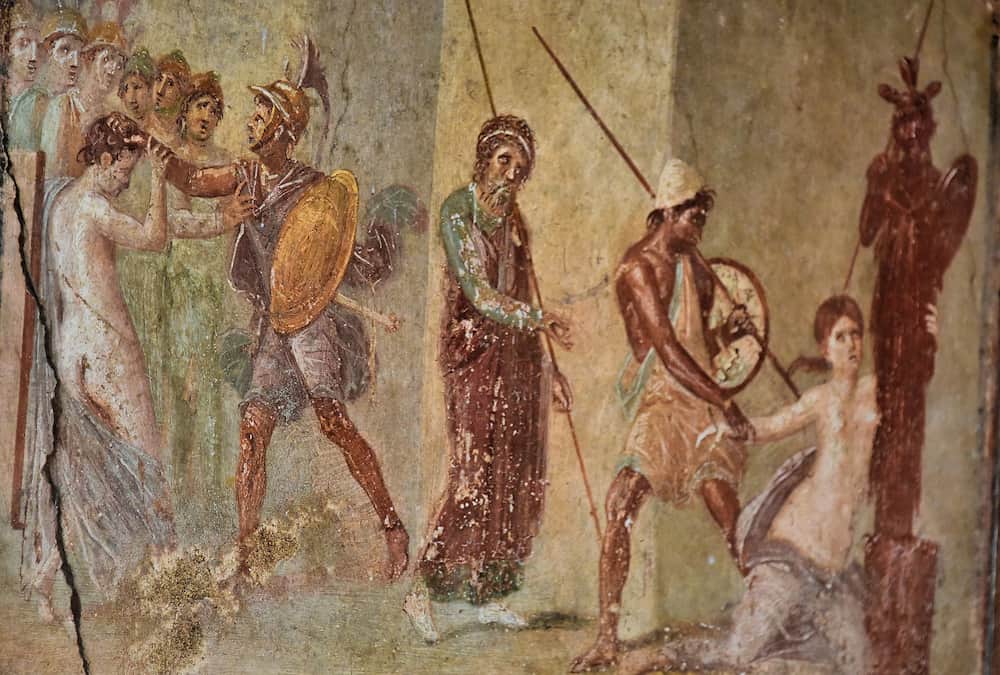
- New Excavations (Nuovi Scavi); beyond Via del Abbondanza is the most recently uncovered parts of Pompeii. Here, you will see the murals and the furnutures of the buildings are still well-preserved.
- House of Vettii; this is one of the Pompei’s most interesting villas and was belond to two elegant and aristocratic brothers. The courtyard and the frescoes on the walls are well preserved and the kitchen utensils are there to surprise and attract the visitors.
- Villa dei Misteri; outside the main excavation area, this villa dates back to the 2nd century BC and has very well preserved frescoes.
- Antiquarium (Granai del Foro); this is a half covered exhibition area at one side of the Forum section. Here amphoras and some other remaings found in excavations are displayed. Some of the famous plaster cast human bodies are also displayed at this part.
- Lupanare (the brothel); this is a small two storey brothel. This is one of the most popular houses in Pompeii and always overcrowded with tourists. Normaly you must enter from one side and exit from the back door. The word “lupanare” means “howling wolves”. The name comes from the fact that the women working here was slaves and do not speak the Roman language, and for this reason they had to make meaningless sounds in order to attract customers. Inside there are small rooms, small beds, a toilet and pornographic pictures depicting the sexual practices.
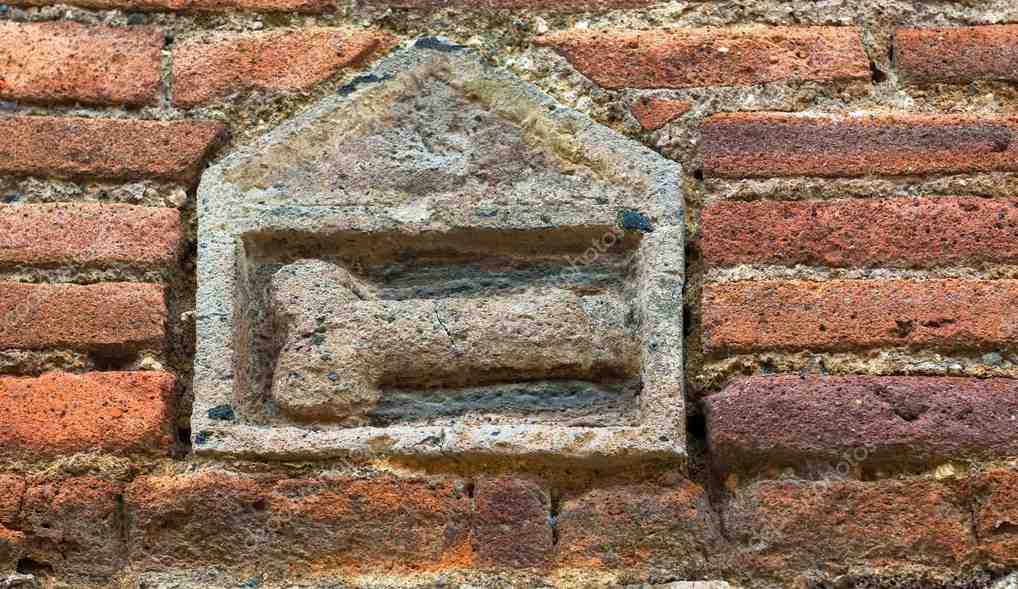
- Forum Area and Apollo Temple; Forum is the Pompeii’s largest square and also was the center of the ancient city. The ground of the square was marbled and still some parts are visible. Around the square you can see the remnants of many original buildings like “administrative buildings, the Temple of Jupiter on the direction of the Vesuvius Mountain, the Temple of Apollo from the Hellenic period and some manufacturing buildings”… if you like to finish your visit in Pompeii, you need to follow the road going down after passing the Temple of Apollo.
Human Bodies of Pompeii
One of the most popular and sensational objects attracting people in Pompeii are the human bodies. Some people thinks that these human figures are petrified bodies. This is not correct. The reality is totally different and a bit more comlex; when excavation works were carried out, some gaps under the soil were detected with special devices and the gaps were taken by injecting the plaster with a long pipe. It is understood that the molds that emerge are the gaps left behind by the bodies of people and other creatures that have suddenly died. In other words, the human figures in Pompeii are actually the molds of the these gaps which were taken by archaeologists.
